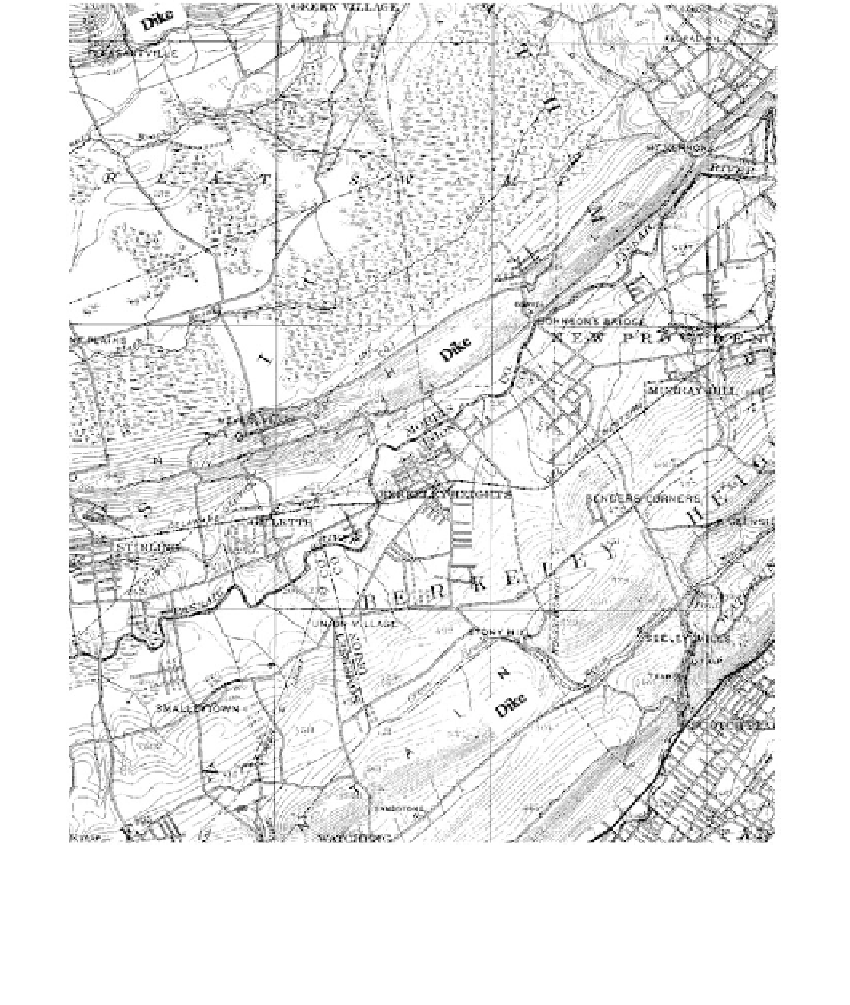Environmental Engineering Reference
In-Depth Information
FIGURE 6.19
Landform of diabase dikes intruded into Triassic sandstones and shales in the area of Berkeley Heights, New
Jersey. The area shown as the “great swamp” is former glacial Lake Passaic (see
Section 7.6.4).
(Sheet 25 of the
New Jersey Topographic Map Series; scale 1in.
1 mi.) (Courtesy of USGS.)
Conditions for Karst Development
Thinly bedded limestone is usually unfavorable for karst development because thin beds
are often associated with insoluble ferruginous constituents in the parting planes, and by
shale and clay interbeds that block the internal drainage necessary for solution. These
formations develop medium angular, dendritic drainage patterns.
Thick uniform beds are conducive to solution and cavity and cavern development as
long as water is present. At least 60% of the rock must be made up of carbonate materials
for karst development, and a purity of 90% or greater is necessary for full development
(Corbel, 1959).
Limestones located above the water table in arid climates, even when pure, do not
undergo cavern development, although relict caverns from previous moist climates may
be present.


